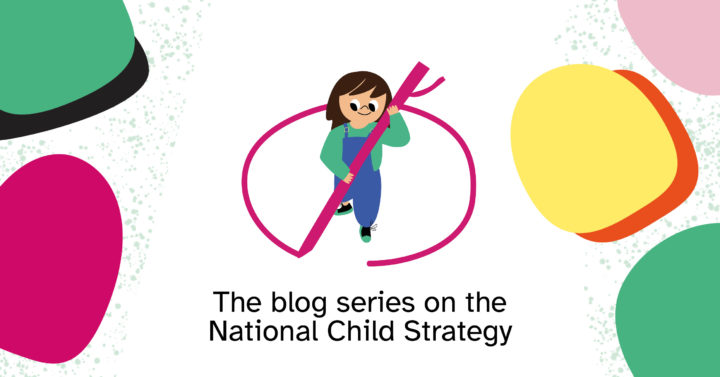Art and culture are part of a good childhood and youth
Blogs
Art is inherent in children. When children and young people get enthusiastic about experiencing and making art and culture, the good energy is tangible. I experience this every day in my job at Annantalo, an arts centre for children and young people in Helsinki, when I come across children in playful flourish amidst my administrative duties. Children’s creativity is reflected at exhibitions, in performance spaces, classrooms, corridors and in the courtyard, and this power of absorption and creation never ceases to amaze me.
In order to live a good life, we need the freedom to explore, be inspired and able to express ourselves as well as the ability to understand other people. Meaningful experiences related to arts and cultural heritage connect us as individuals, audiences, communities and as a society. Art and culture are so essential and important to us that children’s and young people’s access to them is included in the Convention on the Rights of the Child. We have agreed that we want everyone on board.
Socioeconomic factors and equality in activities
The Child Strategy highlights art and culture in the context of leisure activities. It is recognised, quite rightly, that a child’s socioeconomic background affects their access to cultural and artistic activities. The Finnish model for leisure activities (harrastamisensuomenmalli.fi) was created to tackle this issue. Leisure activities will be available in conjunction with the school day so that a child’s background has less impact on their choice of hobbies and they can choose an activity that they like, free of charge. The model promotes opportunities for participation, but it is not a shortcut to the realisation of children’s cultural rights. In addition to socioeconomic status, there are other factors that may hinder a child’s participation in arts-related activities, such as the need for special support, a language barrier or disability. The structure of and support from the environment in which a child grows play a crucial role.
Having access to art and culture depends on how active a child’s family is and on the cultural education offered in early education settings and schools. When a child has been exposed to many kinds of artistic and cultural activities, he or she is also able to choose a suitable hobby.
Cultural centres for children are important and accessible places for many children and their parents in which to spend time. Even if services are available, there are always children whose parents and other important adults do not bring them to these venues for one reason or another, which is why the Association of Finnish Children’s Cultural Centres emphasises the importance of early childhood education and schools in the provision of leisure services.
Early childhood education and schools play a key role
The Child Strategy identifies the role of cultural education in supporting holistic wellbeing and development. Many municipalities have a cultural education plan (kulttuurikasvatussuunnitelma.fi) in place to ensure that every child and young person has access to artistic and cultural experiences through early childhood education and schools. The most significant cultural education programme in Finland is the Art Testers project (taidetestaajat.fi), which offers all eighth graders two visits to cultural institutions during the school year. The programme was launched by the Finnish Cultural Foundation and the Swedish Cultural Foundation in Finland in 2017, and the Finnish Parliament has awarded it funding since 2020. The activities are uniquely equal in this country and also a significant investment in our future if and as we want to continue to be a thriving civil society. This is worth noting, as the Art Testers programme has not yet been permanently included in the state budget.
For all children and young people to have equal access to culture and arts education and activities, we need systematic cultural education as well as support and help with coordination of this in early childhood education settings and schools.
Let’s not forget the essential issues
A sense of inclusion is important here and now. Art and cultural heritage create a sense of belonging in the moment – and also beyond the boundaries of time and place. Stories told by various means of expression create a multisensory and multi-voiced texture of works and experiences that support the community. It is up to adults to offer children and young people these experiences. Let’s bring in children and young people because it makes sense – and because it’s their right.
